The expression “Grand Tour” first appeared in 1670, in the writing of an English Catholic priest, Richard Lassels, who that year published a book in Paris, The Voyage of Italy, in which the cities, monuments, and buildings seen during a trip to Italy were described. The book began with a preface in which Lassels listed the benefits of traveling, and among the various advantages of this activity the priest included the possibility of better understanding the history one reads about in books: “no one,” Lassels wrote, “understands Livy and Caesar, Guicciardini and Monluc better than he who has taken the Grand Tour of France and the Tour of Italy.” This distinction of terms, which, curiously enough, recalls modern cycling events, has been lost over time, with the result that we have come to refer as the “Grand Tour,” more generically, to the well-known “journey of formation of the European ruling class,” to use the concise definition of Cesare De Seta who is the leading Italian expert on the subject. Talking about the Grand Tour, however, does not mean talking only about travel: this is the main merit of the exhibition Grand Tour. Dream of Italy from Venice to Pompeii, set up until March 27, 2022 at the Gallerie d’Italia in Piazza Scala in Milan.
It was a sort of initiation rite of modern Europe, even before it was a journey that brought young people of the aristocracy and upper middle class to Italy (and beyond) from all over the continent. Even an “institution,” according to De Seta. An institution whose roots van traced back to times far older than those with which we commonly associate it, since the prodromes of the 18th-century Grand Tour could be traced as far back as the reign of Elizabeth I, when the English crown financed, and the ruling class promoted, long educational trips to Europe. Lassels himself, when he wrote his Voyage, was operating at a time when traveling to Europe was established practice (the trip typically lasted three years). In the eighteenth century, it would become a much more widespread phenomenon than it had been previously, and would take on even more universal characteristics. In Italy, one arrived to grow on a personal level and to begin to build one’s future, one’s career. And one would return to one’s country with suitcases full of knowledge, as well as voluminous memories.
The one in Milan is not the first ever exhibition on the topic (it will be worth mentioning, among the last ones, the beautiful exhibition City of the Grand Tour that was held in Carrara, at Palazzo Cucchiari, in 2017), but certainly, wanting to exclude the English gestation exhibition Grand Tour. The Fascination of Italy in the 18th Century, which originated at the Tate Gallery in London in 1996 and then brought to the Palazzo delle Esposizioni in Rome the following year, is the most impressive that has ever been seen in Italy and the most complete, on the strength of an itinerary cleverly articulated in a series of nine consequential sections (with the works, however, sometimes arranged freely along the rooms). It could be said that the three curators, namely Fernando Mazzocca, Stefano Grandesso and Francesco Leone, have devised an itinerary that allows one to follow a hypothetical traveler of the late 18th century (the golden age of the Grand Tour is traced back to the period between the Peace of Aachen in 1748 and the descent of the French armies into Italy in 1796) on his journey through Italy, without omitting, in the opening, the motivations for the trip, and accompanying him among the capitals of the Grand Tour, getting acquainted with the artists who had decided to stop in Italy (some of them would even become forerunners of today’s tour guides), observing the Italians of the time and pausing to look for a souvenir before returning home. On paper, it was a difficult exhibition: because the subject matter is not one of the most appealing to the general public, because the material on the Grand Tour is endless, because the theme itself has boundaries that could be stretched out of proportion (travelers from different countries went to Italy with different motivations: the in-depth essays in the catalog illustrate this well, which trace the history of the Grand Tour from the angles of four countries, namely Britain, France, Russia and Spain, from which the tourists came). But it still resulted in an exceedingly engaging exhibition, one of the most enthralling among those seen at the Gallerie d’Italia in recent years, despite the sheer volume of works the curators were able to assemble.
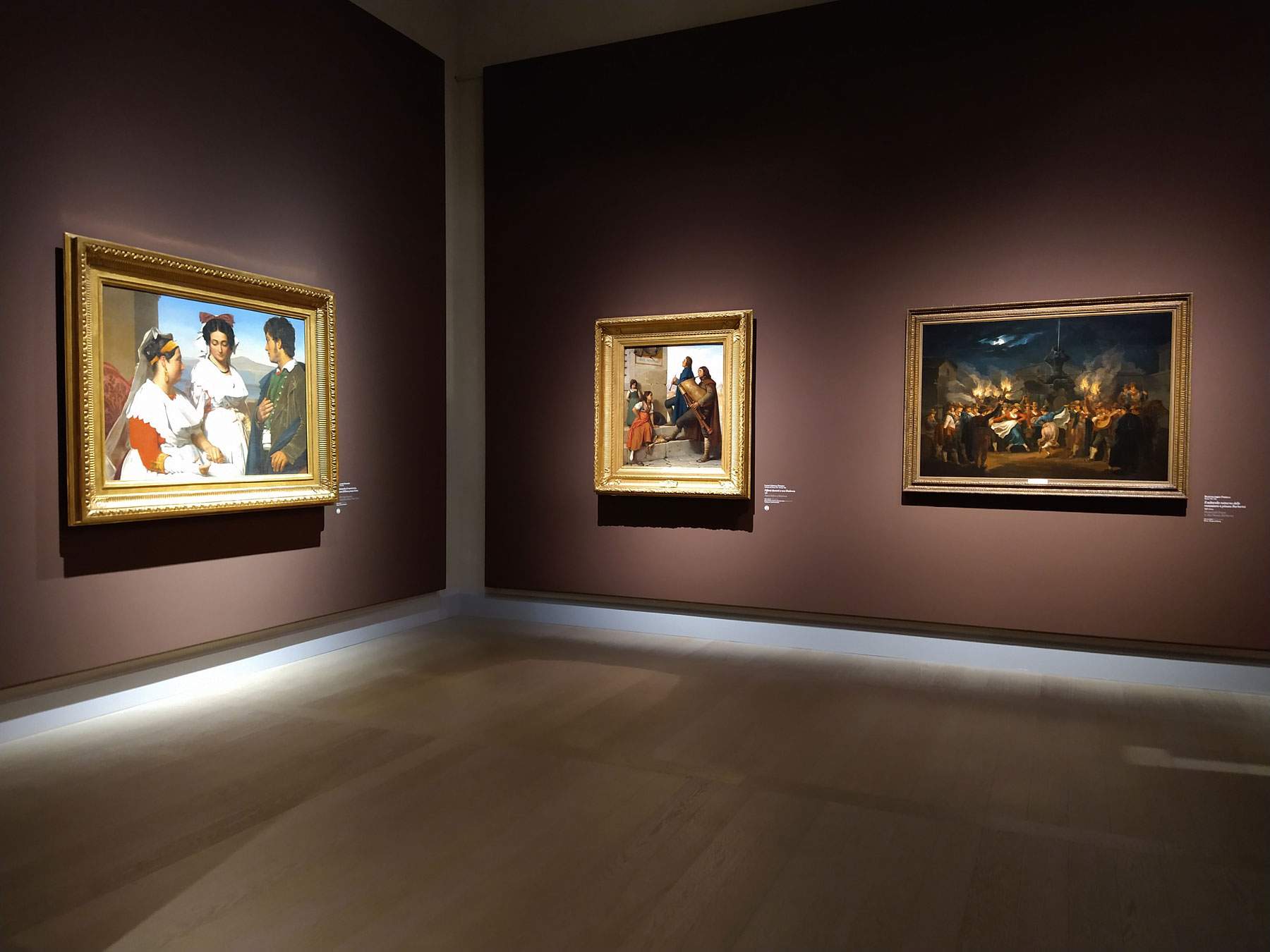

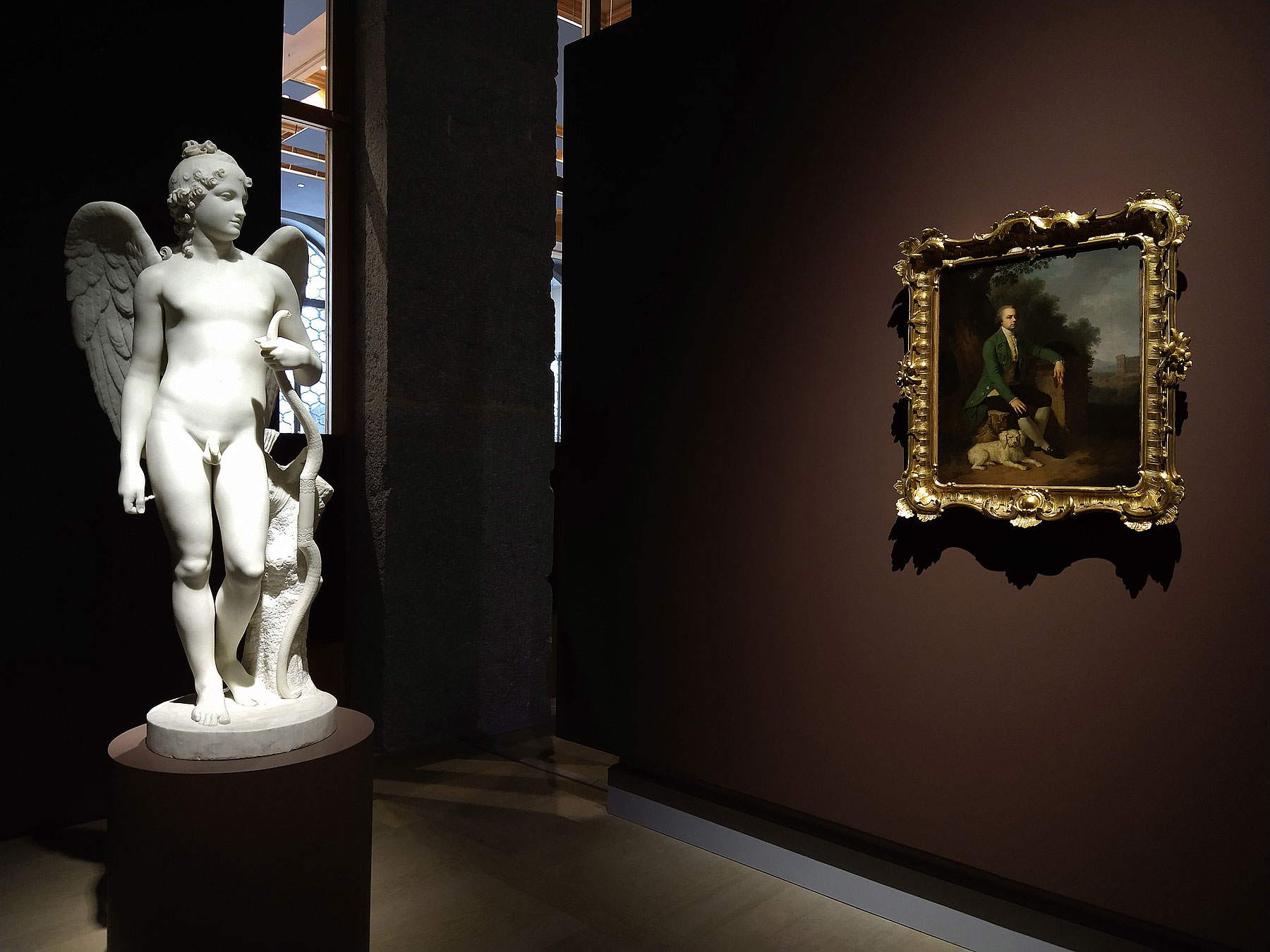
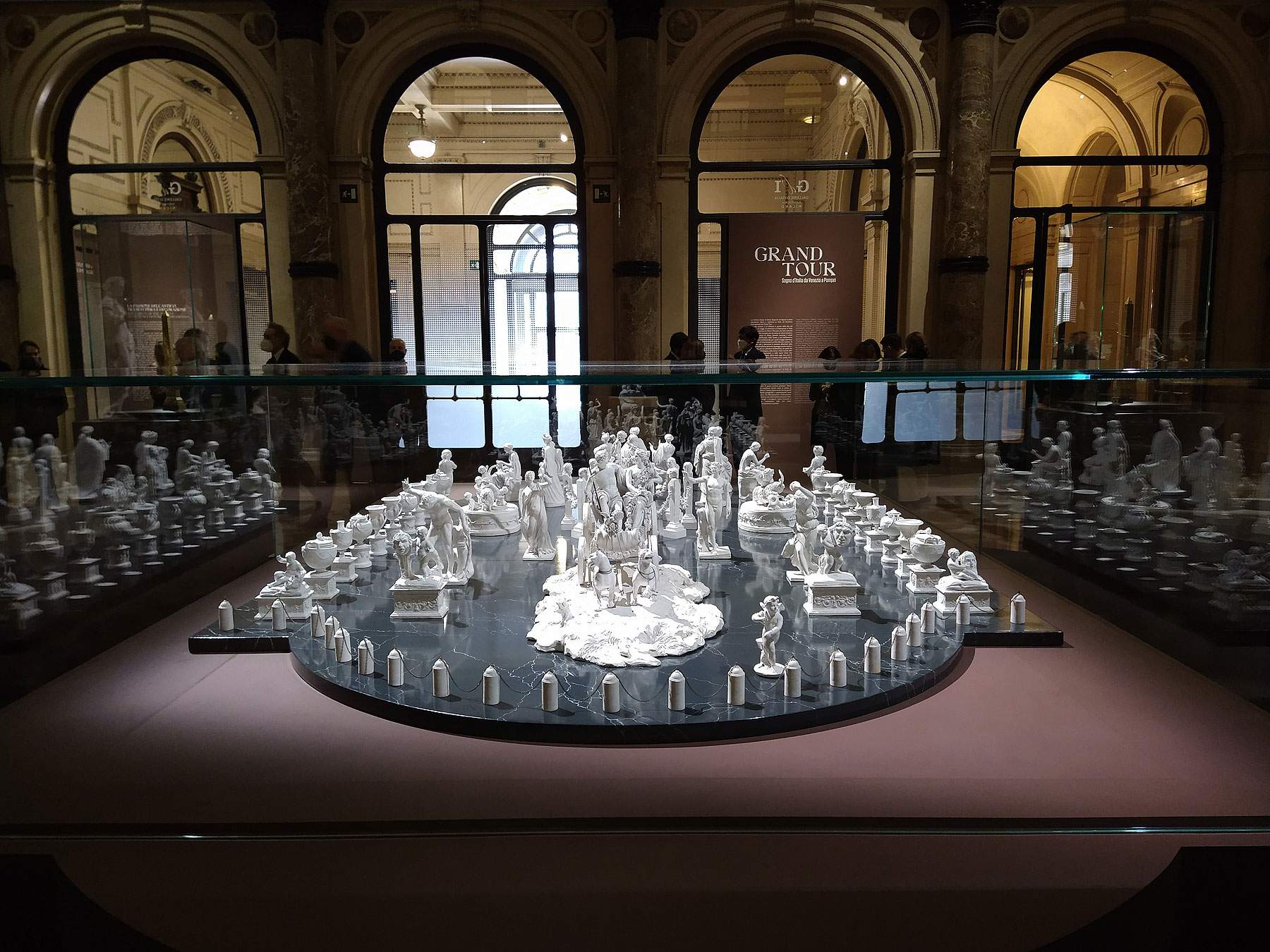

It starts with a room dedicated to the “Capitals of the Grand Tour,” which gathers some views of the main junctions of the travelers of the time, identified in Rome, Florence, Naples and Venice, although the journey of the grand tourists stopped in a variety of cities, from Ravenna to Mantua, from Bologna to Milan, from Genoa to Lucca. But it could not disregard the four capitals: travelers usually arrived from the north (or by sea, disembarking in Genoa or Livorno) and reached Florence, then descended through Rome to Naples, and then ascended again to stop in Venice before resuming their way home. In Florence (recalled by Thomas Patch’s view that opens the exhibition) one would stop for the Renaissance, to admire the Uffizi collections, to observe the results of Medici patronage. Rome astonished, meanwhile, by its ruins: Gaspar van Wittel’s marvelous view of the Colosseum, arriving from Norfolk, is one of the peaks of the exhibition, and Michelangelo Barberi’s pair of views, one of the forums and one of St. Peter’s, restores with icastic clarity the contrast between ancient and modern Rome that beguiled travelers. And then, Rome seduced by the idea of an ancient grandeur lost, attracted by the presence of artists and artisans who had made it the greatest place to find memories of one’s tour. In Naples, one was moved by Vesuvius and its eruptions, which were moreover numerous between the seventeenth and eighteenth centuries (an entire section of the exhibition is devoted precisely to Vesuvius, such was the fascination it exerted on foreign travelers), and one was lulled by the amenity of the landscapes. And finally, Venice was the city of events, living its irreparable decline amid fabulous festivities: the crowded regatta on the Grand Canal painted by Canaletto is a full demonstration of this.
Italy had also become a favorite travel destination because it was possible to see up close, as in no other country was possible to do, the ruins of the past that had to be studied and known in order to be able to say that one had had a complete education: the section on the “fascination of ancient ruins” investigates this aspect, almost always coinciding with the very motivations for the stay in Italy, with a series of paintings among which stand out, in addition to the very famous Capriccio by Canaletto conserved at the Poldi Pezzoli in Milan, an emblematic painting and symbol of a cultural temperament insofar as it was capable of fusing ancient and modern and arousing at the same time feelings of awe and nostalgia, two lesser-known paintings such as Giovanni Paolo Pannini’s Ideal View (Ilaria Sgarbozza in the catalog defines it as “one of the most beautiful and significant capriccios” of the Piacenza artist’s production, “for the quality of both the architecture and the characters and for the remarkable state of preservation,” not to mention its rarity), which aligns a series of monuments all actually very distant but present on the canvas as they were intended to meet the precise request of a client, and Hubert Robert’s Capriccio with the Pantheon, from the collections of the princes of Liechtenstein. The French painter’s ruins, Mazzocca explains well in the catalog, “prelude to the dramatic and romantic vision of antiquity, as a testimony to the transience of civilizations and the fragility of human destinies”: the chronological iter of the exhibition stops right at the dawn of Romanticism. Then there is an interesting group of paintings that almost acts as a hinge with the next section, dedicated to the Mediterranean landscapes of Italy: so here is another painting dense with Romantic sensibility, Joseph Wright of Derby’s The Tomb of Virgil in the Moonlight, which well conveys the sense of a landscape, the Italian landscape, that appeared (and still appears today) “imbued with a historical memory that transcended the ancient vestiges with which it was littered” (so Grandesso), and here are the ruins of Sicilian temples (Sicily, which, moreover, was initially on the fringes of the Grand Tour, given the logistical difficulties in reaching it, and until the 1770s-1980s had remained the destination of a few daredevils, but would soon be rediscovered), shining in the warm light of the southern sun in Ferdinand Georg Waldmüller’s paintings and, almost without our noticing, guiding us to the next chapter.
The tourists, after all, were also attracted by the extraordinary variety of the Italian landscape, which, writes Francesco Leone, “gave unforgettable sets for their diversity but also for their entanglements with classical culture.” It is difficult to separate the attraction for the landscape from that for the memory of ancient times, it is impossible to think of Italy by separating the territory from the trace of man: before the constituent fathers, who included this indissoluble union in Article 9 of the Charter, the Grand Tour travelers had understood it well. To describe the Italian landscape meant, therefore, to give an account of the action that human beings, often forced to defend themselves from a miserly nature in so many areas of our country, had to undertake to adapt: the symbol of the section is a painting by Jakob Philipp Hackert which, although inserted among paintings belonging to the next section, well communicates this idea, with the stacks of Aci Trezza towering over the seashore and answered by the buildings of the seaside village on the coast. An entire section, occupying almost a room by itself, is devoted, it was said, to the glow of Vesuvius: given the quantity of accounts, letters and descriptions by foreign travelers impressed by the volcano’s activity, the curators thought to reserve a chapter for it, with large-, medium- and small-scale paintings, some of which (such as theEruption of Vesuvius in the Moonlight by Frenchman Pierre-Jacques Volaire, a specialist in the genre) leave even us contemporaries astonished, investing us with the sense of the sublime that must have animated those travelers who, in the absence of every comfort and means of safety, attempted the climb to the summit and then paused to contemplate the spectacle that stood before their astonished eyes.

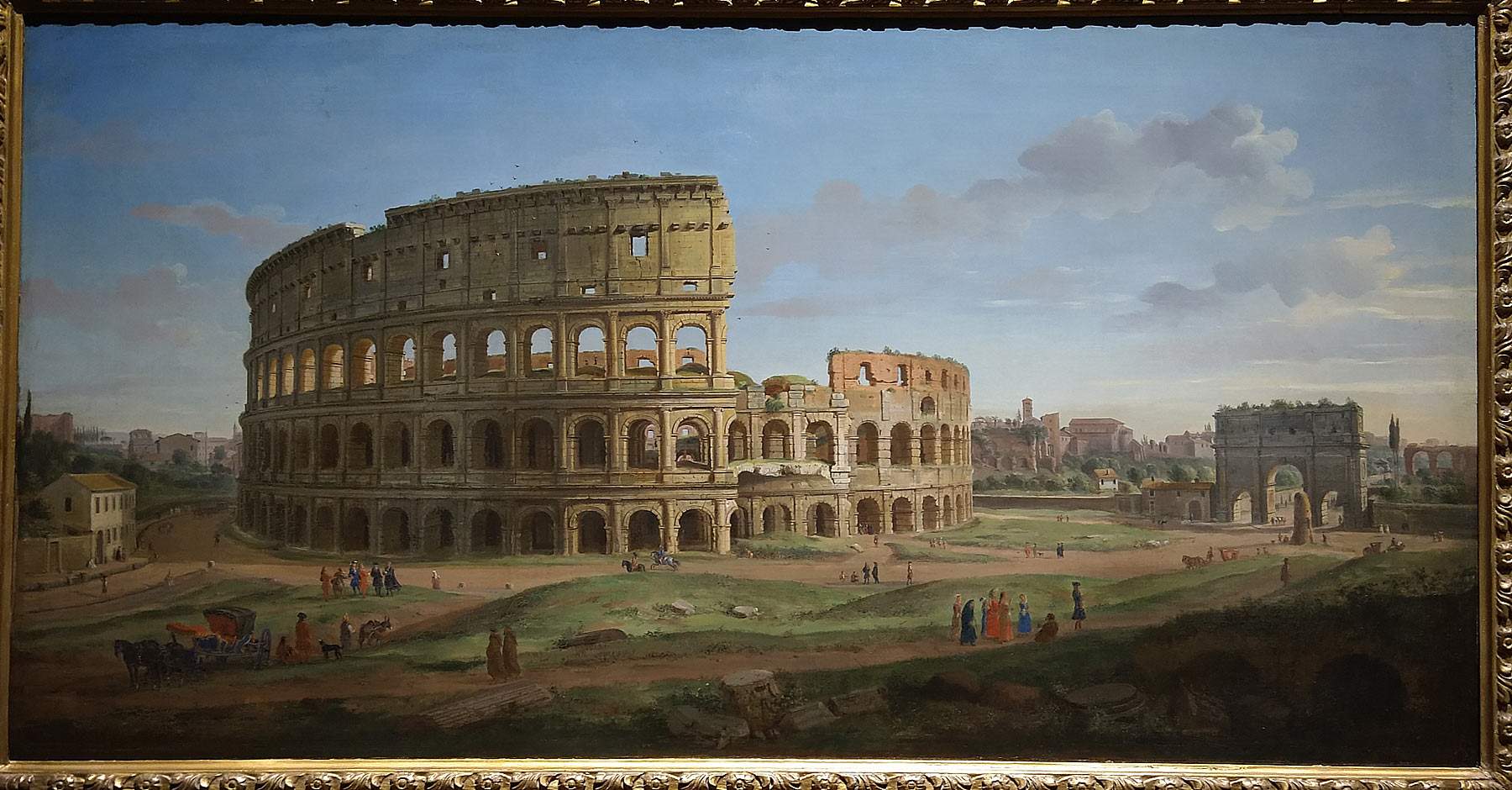
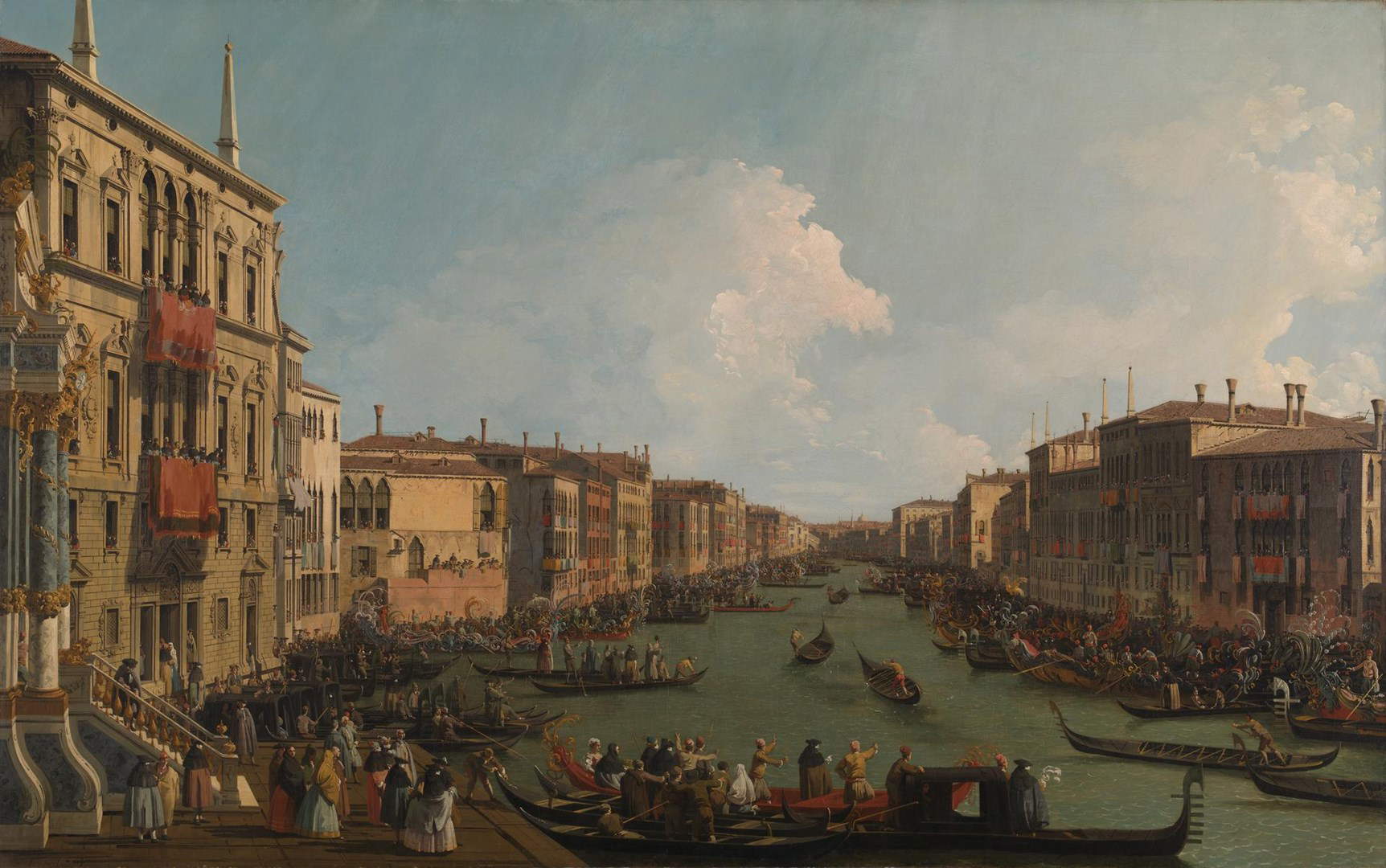
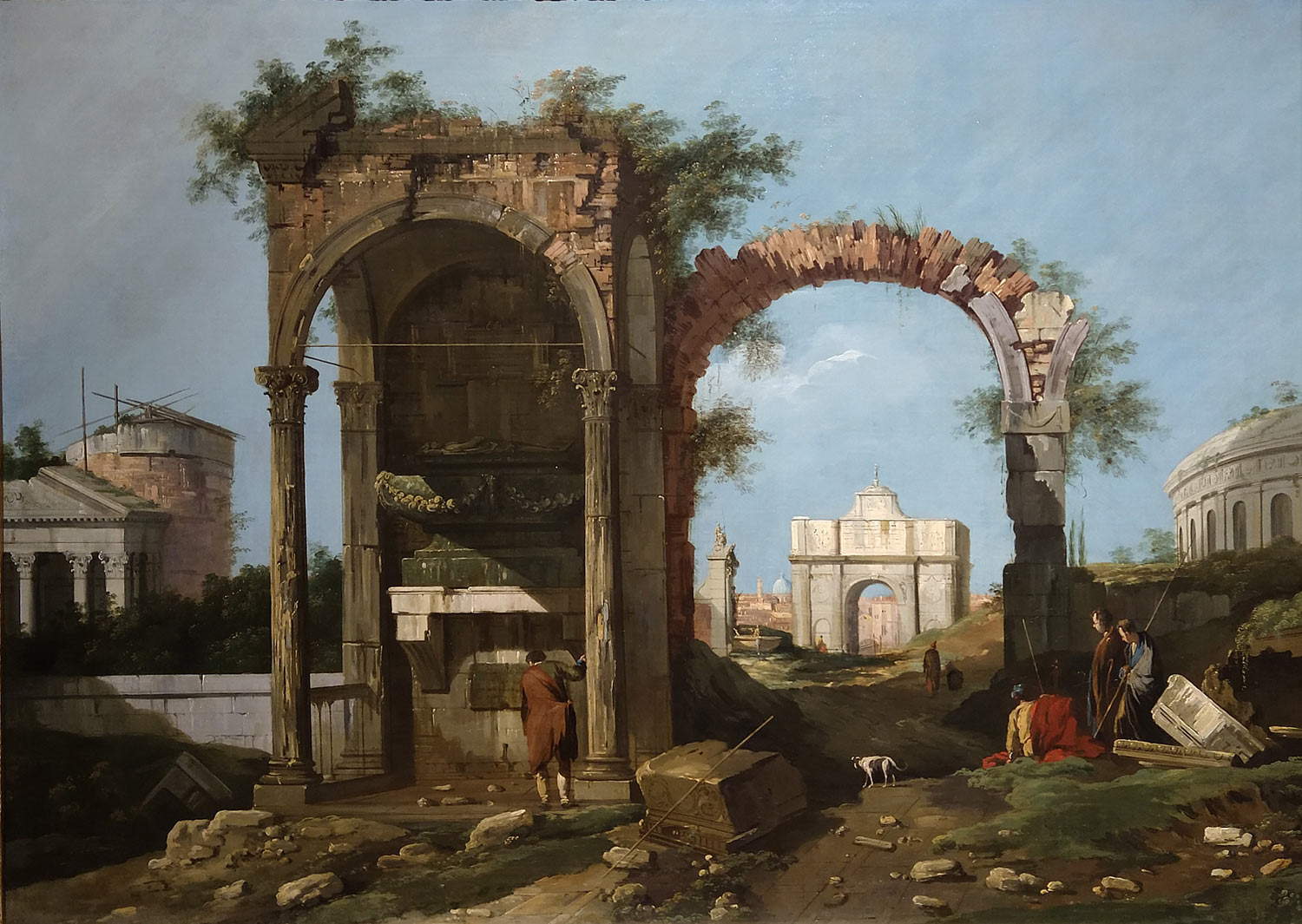


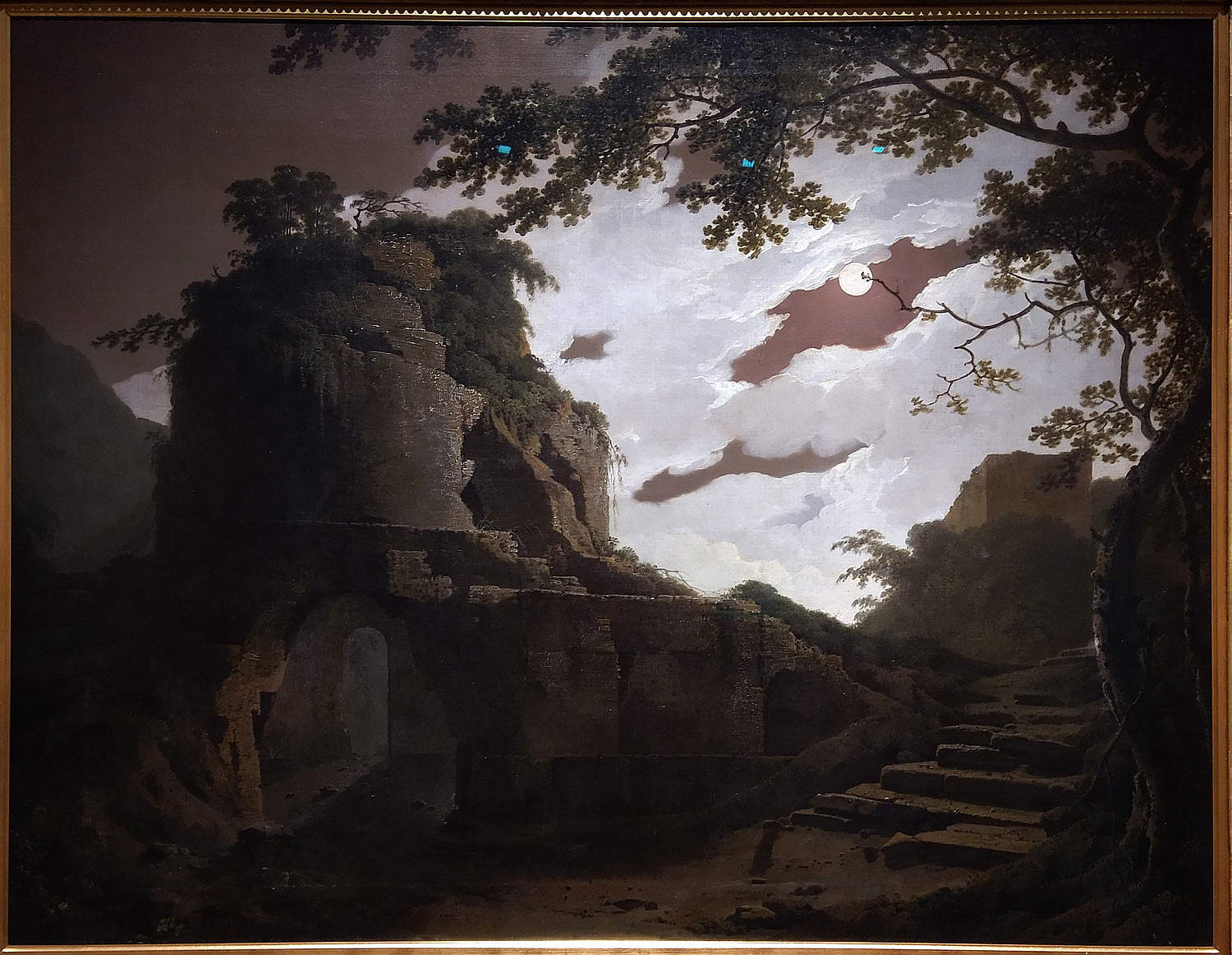

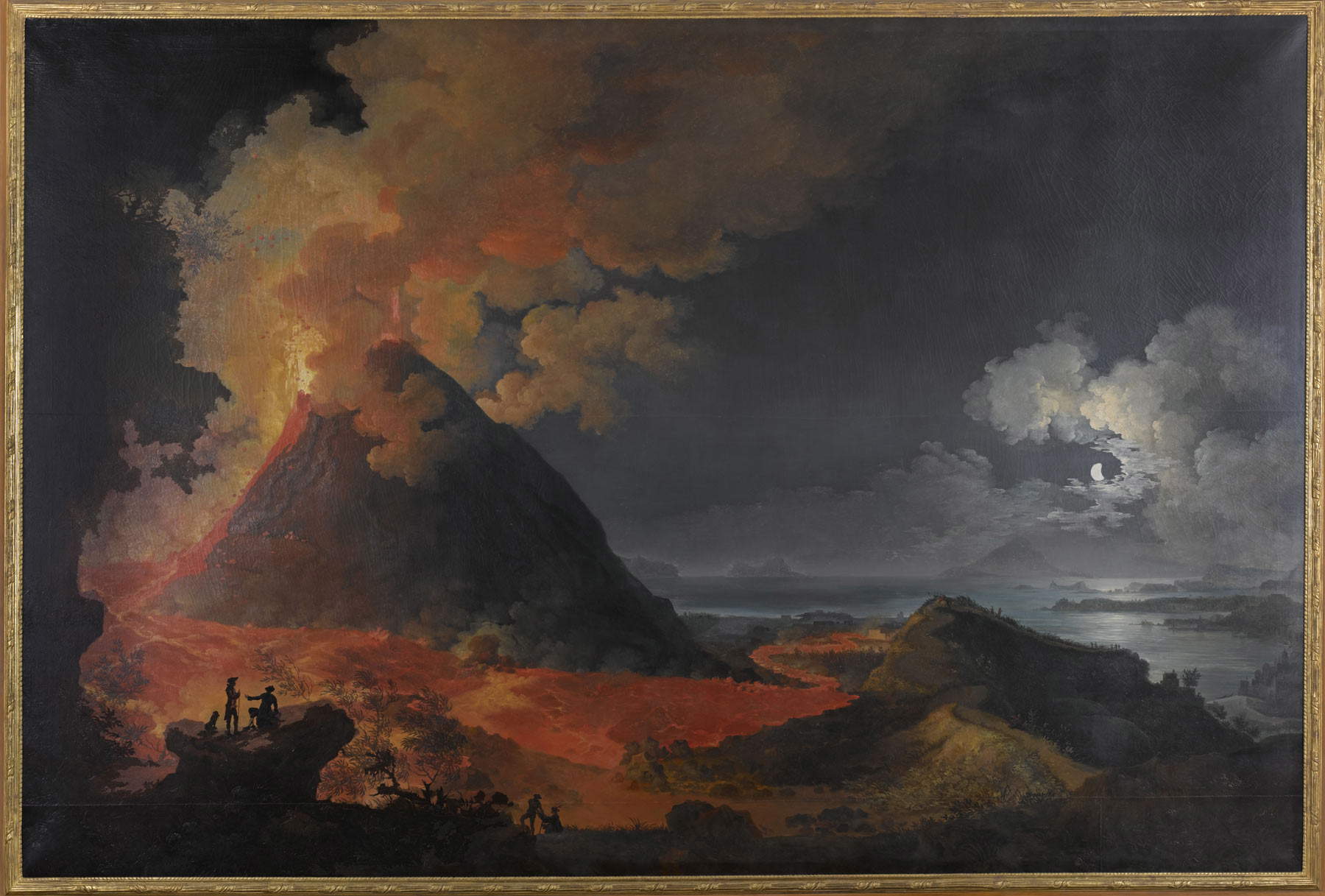
As for the next two sections, those devoted to travelers and artists (perhaps the least interesting for the general public), it is worth dwelling, rather than on the personal stories of the individual characters on the walls, on a few episodes (such as Giulio Carlini’s splendid portrait of the Tolstoy family, which returns to Italy five years after the Carrarese exhibition mentioned above, despite the fact that it is very distant in time being a work of 1855, or like the singular painting by Franz Ludwig Catel that, in Naples, portrays Karl Friedrich Schinkel at the window, the symbol par excellence of Sehnsucht and Romantic sentiment) and on some sharp points that the curators have been able to insert in these rooms to enliven a section that risks remaining indigestible if one does not nurture a strong passion for the subject, or for eighteenth-century portraiture. First: the possibility of observing the birth of a new artistic genre, invented by the great Pompeo Batoni, a painter well known to critics, among the greatest Italians of the 18th century, but much underestimated by the public. A reform in its own right exemplified by all his portraits in the exhibition, which depict foreign gentlemen standing, often in the company of their dogs, near ancient monuments or statues: Batoni thus imposed, Grandesso explains, “a sophisticated model that met the expectations of taste and the ambitions of self-representation of the highest rank of the aristocracy.” In practice, Batoni managed to fuse a genre considered too imitative as the portrait with suggestions comparable to those of history painting, creating souvenirs of the highest order and innovative products at the same time. Second, the birth of neoclassicism. One lingers for a long time in front of two paintings by Batoni’s rival, the German Anton Raphael Mengs, who, in contrast to the elder Lucchese, had been willing and able to make himself the interpreter of Johann Joachim Winckelmann’s ideals of imperturbability and composure, the subject of one of Mengs’ two portraits in the exhibition (the other is Mengs himself, in one of the most beautiful self-portraits of the time). Third, the feminine. One is enchanted by the freshness and delicacy of the self-portrait by Louise-�?lisabeth Vigée-Le Brun, the author of a rich and intense painting that rivaled that of Angelica Kauffmann, who, on the other hand, is featured in the next section, devoted to “Italian beauty.”
Thus, for the first time we see on display the Italy of the time, modern Italy, with which many artists inevitably found themselves confronted. “The attractions of modern life,” Grandesso writes, “also include the aspects of social life, for example related to theaters, thus to music and the performances of the famous improvising poetesses, on the other hand to popular festivals, the Roman carnival with the Berber horse race and moccoletti, the girandola of fires at Castel Sant’Angelo, the ottobrata, the game of palla col bracciale and the bullfights at the Corea Theater.” The protagonists of these paintings are high-ranking personalities, such as the beautiful Domenica Morghen and Maddalena Volpato painted as two muses in the countryside by Angelica Kauffmann, but they are also the commoners of Jacques-Henri Sablet’s First Steps of Childhood, a French painter particularly interested in these moments of daily life transfigured into composed genre scenes, or the poor but dignified Pilgrims of Rome by Paul Delaroche, a painting where we are captured by the proud pride of the mother in the center, dirty and tired, and of course yes idealized in an almost unreal way, but beautiful in her stern manner. The final act of the exhibition, before we get to the two appendices, is a scene of Sicilian life captured in At the Gates of the Monastery by Waldmüller, an Austrian painter alien to any desire for social denunciation (many travelers, especially in written works, had not been able to help but emphasize the jarring between the splendors of the past and the miserable conditions in which many were in the present), and author of a painting effectively summarized by Elena Lissoni as one capable of capturing “along with the enchantment of the Mediterranean nature and ancient monuments also the beauty of the Sicilian people, their customs and a life in the open air, which still retained a primordial rhythm and a simple religiosity.”
Before leaving the Gallerie d’Italia, we wander through the last two sections, which close the exhibition in the guise of appendices, as mentioned. One is devoted to souvenirs, objets d’art and manufactures of luxury: large porphyry vases, gilded bronze statuettes, table tops made of semi-precious stones, marble basins and even an incredible centerpiece (the one by Giovanni Volpato, with Triumph of Bacchus and Ariadne, Apollo and the Muses that can be admired in the central hall) were some of the objects that grand tourists took with them from their wanderings. Also standing out in the middle of the portrait room is a curious mosaic table by Michelangelo Barberi, decorated in enamel with views of Rome: a work of the highest standard perhaps even executed for the future Tsar Alexander II, who in his twenties made his Grand Tour between 1838 and 1839, and the work dates to 1839. Arranged around the central hall is then a series of statues, ancient and modern, that leave the visitor with the suggestion that a passion for antiquity must have instilled in those who looked forward to arriving in Italy. Statues, such as the Laooconte that had inspired Winckelmann himself and some of his most famous pages, that stood as a model to be celebrated and copied: a new collecting taste was born, well represented by one of Canova’s masterpieces, theWinged Cupid executed for the Russian prince Nikolai Jusupov, who was in love with Rome and classical art, and on loan from the Hermitage in St. Petersburg.

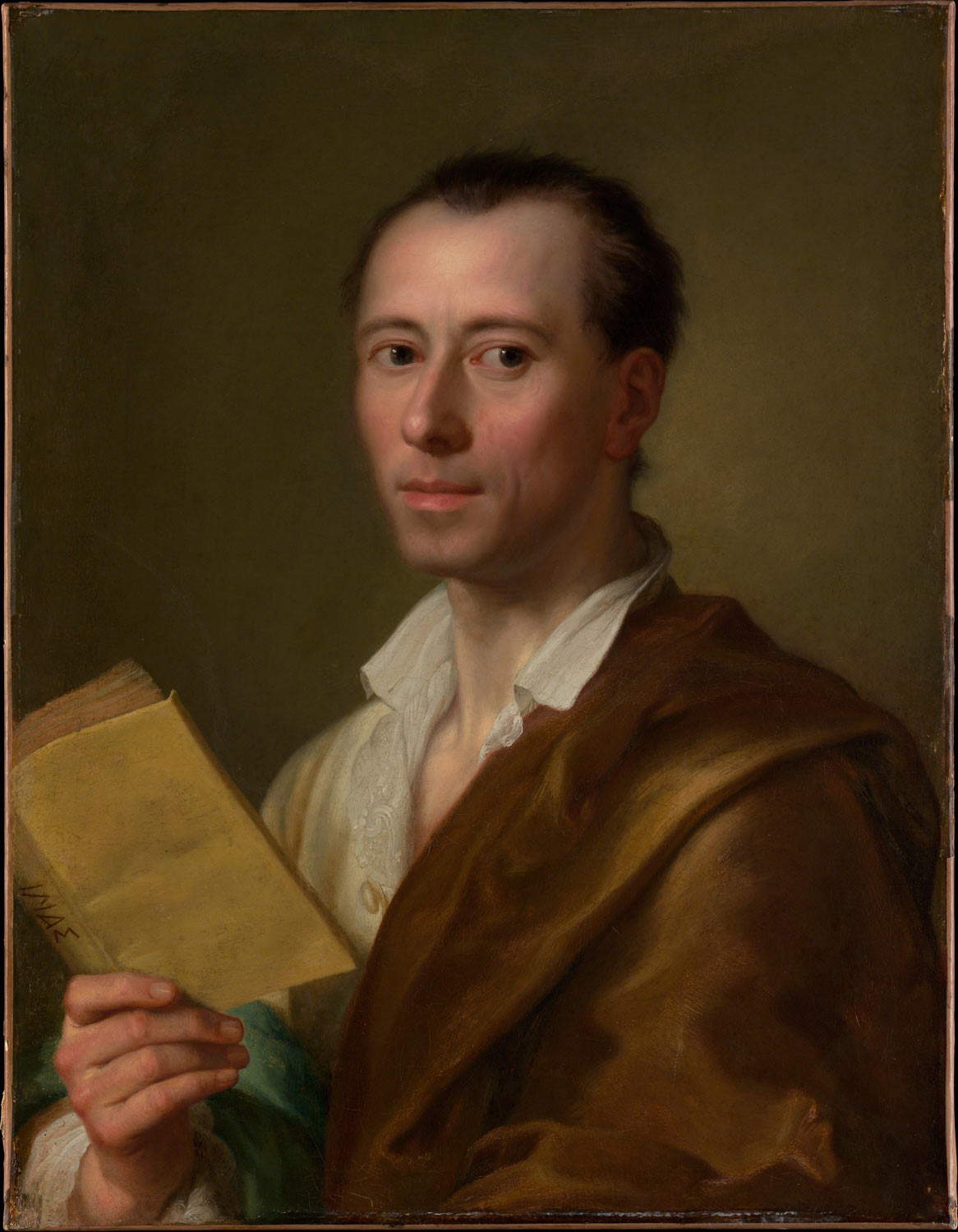
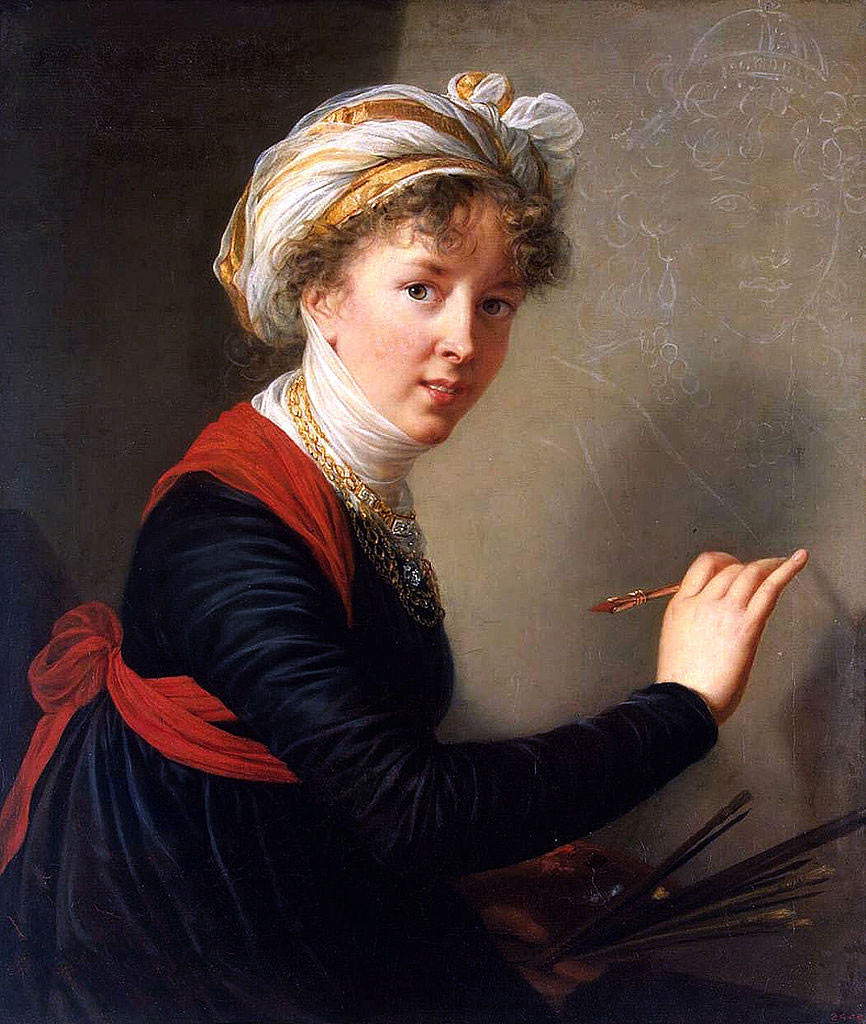
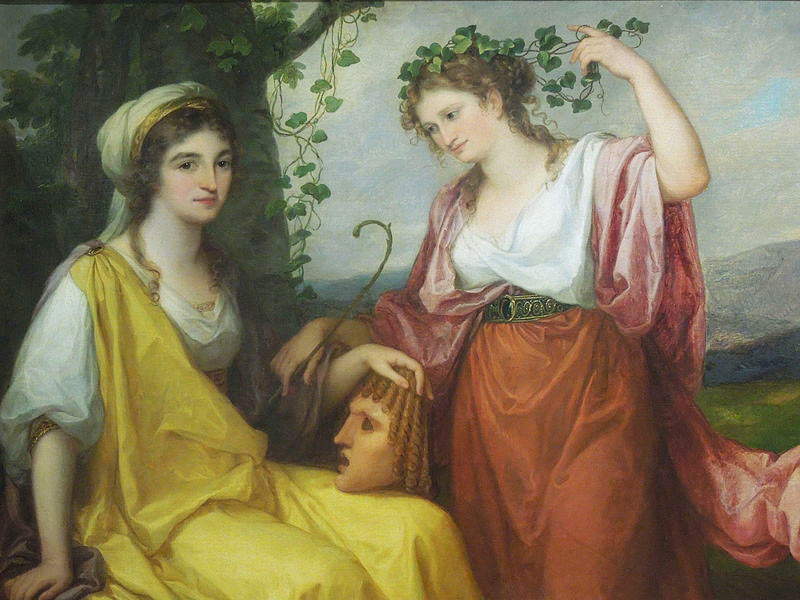


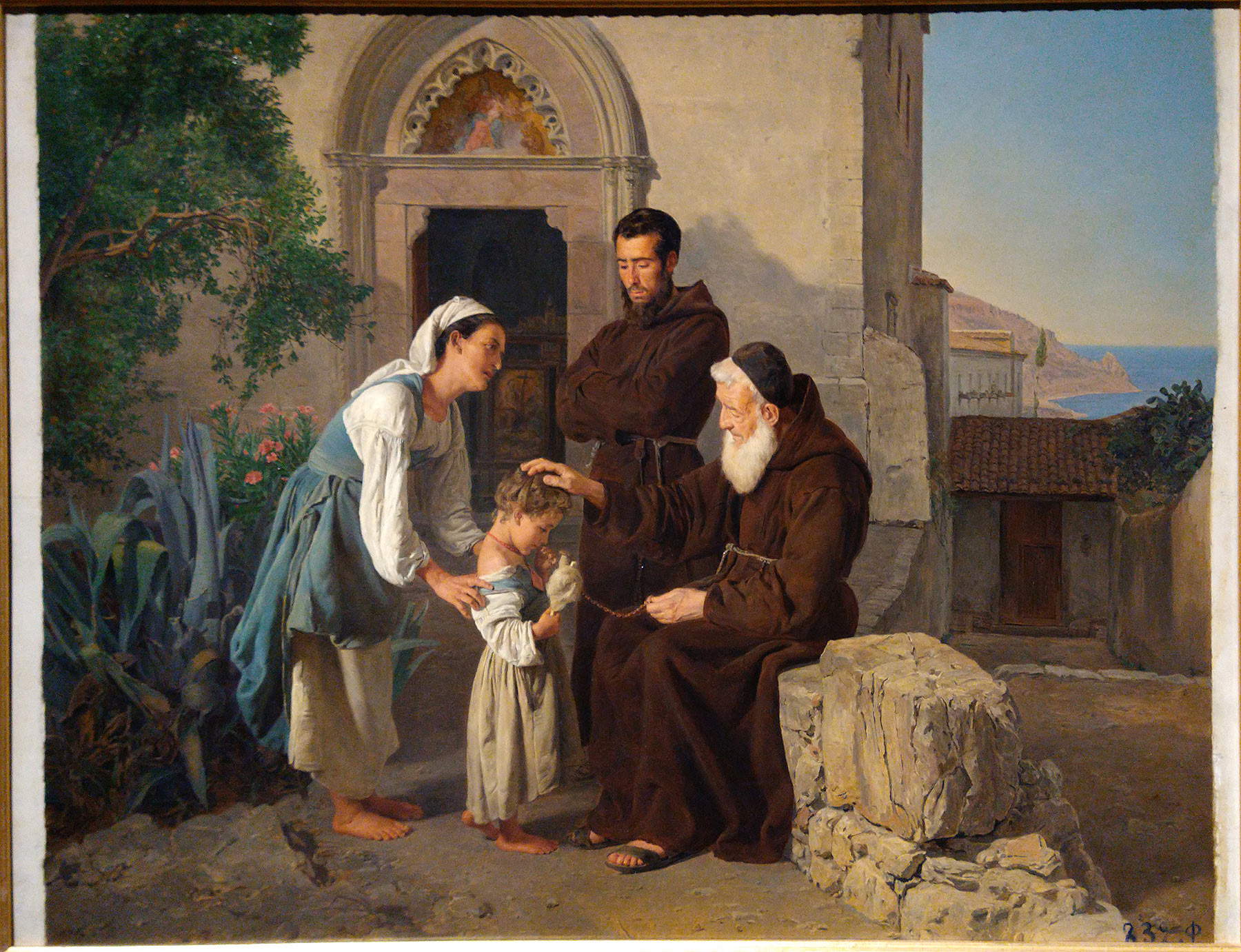

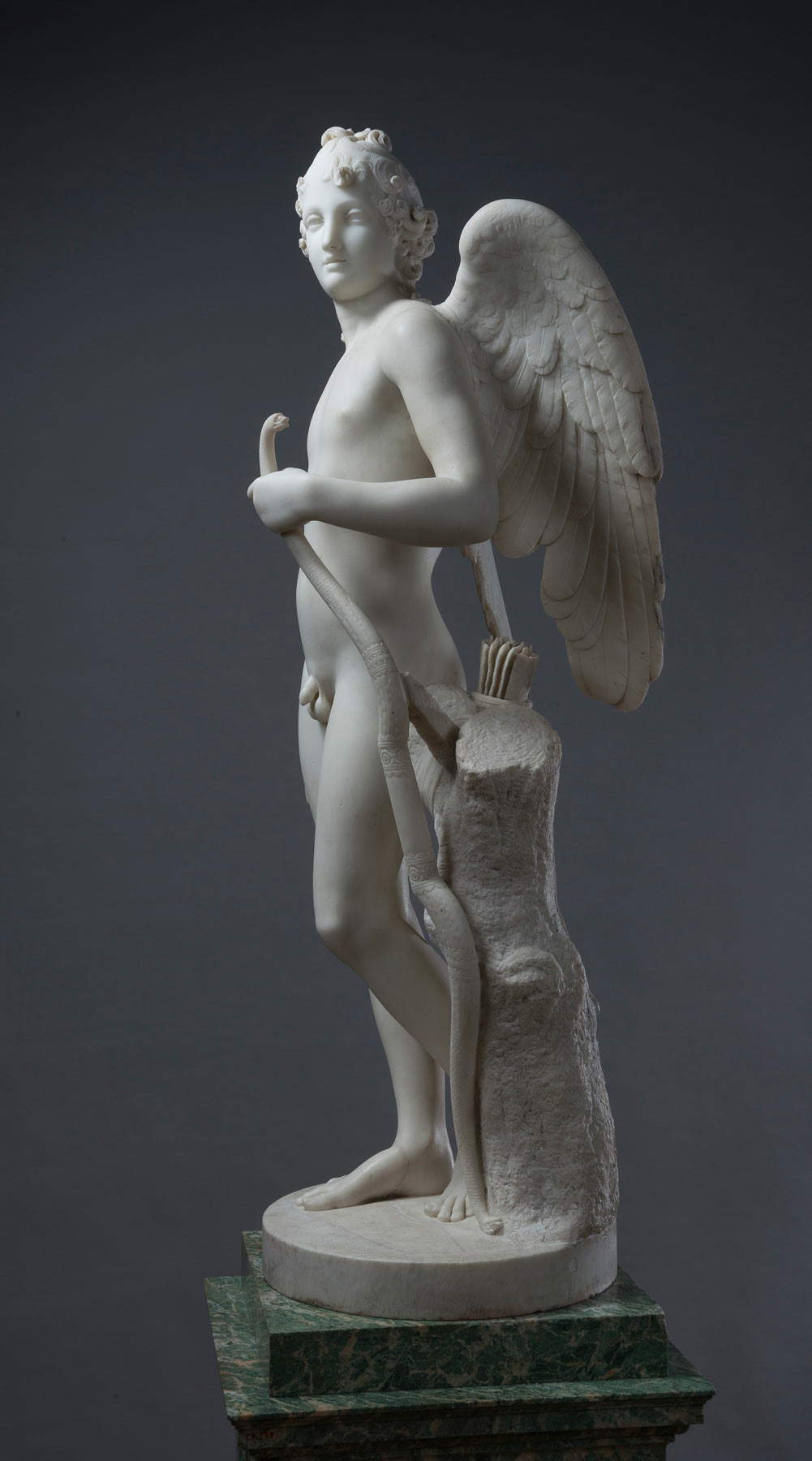
Compared to other exhibitions that have traced the history of the Grand Tour in the past, the Gallerie d’Italia’s exhibition focuses, more than on the historical and chronological aspect per se (which is nevertheless well highlighted where necessary, especially at the start), on the individual stages of the journey, on the stories of the travelers and artists, on the reasons that moved the grand tourists, and on the feelings that their stay in Italy aroused in their souls. From the standpoint of art-historical events, perhaps the most significant aspect of the exhibition is its emphasis on the fact that Italy was a center of artistic production at the European level, where experimentation and innovation continued: in the itinerary this attitude emerges from the works of Batoni, Canaletto, Piranesi, and Canova, as well as the many who followed them. The goal the curators have set themselves, declaring it in the catalog preface, that is, to disprove the prejudice that Italy, in the second half of the 18th century, did not produce an art that lived up to its past, is therefore well hit, demonstrated by the works that testify to a fruitful vitalism, and the Grand Tour itself, in this panorama, offered a contribution that was not secondary.
Those who wish may finally read under the surface the idea of the Grand Tour as a “mirror” that underlies one of Cesare De Seta’s most famous books, however much the exhibition at Palazzo Anguissola Antona Traversi focuses more on the point of view of the travelers than on that of the inhabitants. A point of view that had nevertheless been fundamental to the formation of the self-consciousness that Italy assumed “in the mirror of the Grand Tour,” De Seta wrote. A consciousness that was also formed with the contribution of foreign travelers, “through their direct experience, which has the advantage of being aimed at large parts of the peninsula, as is evident from literary sources, travel diaries, practical guides, up to the ponderous scholarly works on the history of Italy.” The landscapes, the cities with their squares and palaces, the ancient and modern monuments, the ruins of the past are the elements that make up that mirror in which the traveler was reflected, “and these in turn in their readings and interpretations reflect the changing image of the country.” And the Grand Tour thus takes on the dimension of a fundamental moment in national history.
Warning: the translation into English of the original Italian article was created using automatic tools. We undertake to review all articles, but we do not guarantee the total absence of inaccuracies in the translation due to the program. You can find the original by clicking on the ITA button. If you find any mistake,please contact us.